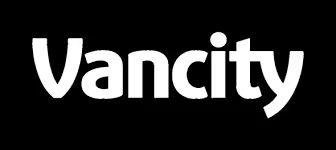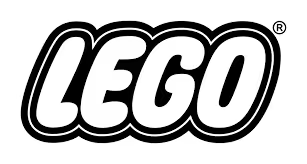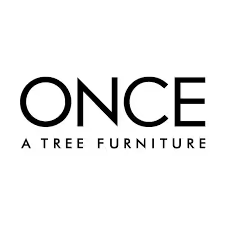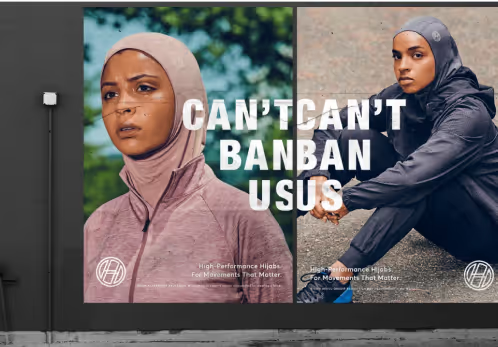What is a Challenger Brand?
At 5&Vine, we’ve always believed in the power of the Challenger mindset to drive meaningful change. But over time, we’ve seen the term lose its edge. Disruption became the default. Rebellion for its own sake became noise. Challenger became a tagline.
That’s why we’ve evolved our view. The brands that win today won’t do so by shouting louder – but by standing truer: to their purpose, their people, and their values.
In this Challenger Guide, we honor where we started.


















Who coined the term?
What is a Challenger Archetype?

Missionary



Next Generation



Enlightened Zagger



People’s Champion



Feisty Underdog



Irreverent Maverick



Dramatic Disrupter



Real & Human



Democratiser



Local Hero


What does 5&Vine believe?
That’s why we’ve evolved our lens. We still believe in the power of the Challenger mindset – but not in disruption for disruption’s sake. We’re focused on building brands that stand for something clear and grow with integrity.
Challengers are not defined by their size
Challengers change how we see things
Challengers fight smarter
Challengers care and have purpose
Challenger Brands Questions, Answered
It's important to be a Challenger Brand because, more than ever, consumers are aligning with brands that share their values. The 2023 Meaningful Brands™ Study showed that meaningful brands are not just good for the world, but also have stronger bottom lines that outperform the stock market by 222%.
Companies have a responsibility to double down on their political position and speak out about issues that matter most to their customers, employees, and communities. Don’t shy away from this. Embrace it. Challenger Brands are the leaders that the world needs.
Read more in our blog: 3 Questions Brands Must Ask Before Addressing A Social Issue
- Challengers pursue both profit and purpose
- Challengers are brave
- Challengers question the status quo
- Challengers surround themselves with Challengers
- Challengers make it work with the resources they have
- Challengers prioritize community and connection
Read more about these in 5&Vine’s blog: 6 Characteristics That Make a Challenger Brand
One of the best and most iconic Challenger Brands is Airbnb. Airbnb has disrupted an industry that was growing complacent and accepted as the norm. It showed the power in mobilizing a community of independent hosts and their properties to help us connect with each other on a human level, and build an exceptionally strong business in the process.
Our affinity towards the brand stems from its drive to forge connections when we travel, to deepen our understanding of others and build community.
There are few things more sacred than the privacy of our homes. They often reveal who we really are, from our strengths to our struggles. Inviting guests into our space is something typically reserved for those we are closest with. Airbnb has helped bridge that gap by helping prospective guests get to know prospective hosts, find commonalities and build trust. In doing so, it has enabled countless individuals to experience a new dimension to their travel and understand the people and neighborhoods they are visiting in a way that centralized and sanitized hotels are unable to.
Airbnb has also challenged the notion that we must build new structures in city centers to house those visiting, when there are hundreds or thousands of underutilized rooms or houses that can provide the desired shelter and comfort.
It’s taken the neglected art of hosting and brought it back into the spotlight, enabling individuals to show their care and attention to detail through guidebooks, warm greetings, welcome amenities and more. At the same time, large hoteliers and airlines continue to unbundle their service offering, charging for internet access, snacks and early check-in.
Discover more examples in our blogs: What Is A Challenger Brand?, and Challenger Brands We Love: Guide Beauty, about Haute HIjab in It’s Time to Build Your Challenger Network.
Becoming a Challenger Brand is not an instantaneous shift – it’s a journey that begins by challenging the way we think and act. This journey starts with asking crucial questions to spark Challenger Thinking such as:
- “Who loses when we win?”
- “Are we hindering progress in important areas?”
- “Why does it have to be this way?”
- “How could this be better?”
These questions enable us to critically examine our practices and identify areas where change is needed. It entails conducting internal audits, engaging with stakeholders, and seeking diverse perspectives. By embracing these questions and actively listening to the answers, brands take the first step towards becoming more responsible and impactful.
Discover more about how to transition from an Establishment Brand to a Challenger Brand in our blog: What Is The Opposite Of A Challenger Brand?
Rather than being defined by size, being a Challenger is defined by mindset and a desire to upend the status quo. Challengers are brave in speaking out against wrongs and unflinching when making the most of their unfair advantage.
Challenger Brands embody a level of care that goes deeper than a mission statement or marketing campaign. It permeates through every individual in every department. And when a brand adopts that kind of culture, they’ll remain a Challenger Brand for life.
A Challenger Mindset needs to start internally. How can you discuss sustainability with your consumers if you’re not evaluating and optimizing your internal operations? How can you join the fight against prejudice if you’re not championing inclusivity and asking the tough questions within your own team? How can you challenge your competitors if you are not challenging yourself?
For brands to fully embrace Challenger Thinking and encourage employees to do the same, we suggest an intervention that forces teams to consider an alternate point of view.
Start by identifying the unassailable truths of your industry and competitors: pricing, quantity, packaging, delivery, timing, efficacy, communication, service, lifespan, availability, target, jobs to be done, accepted points of failure, warranties, and consider the following questions:
- If we started our business from scratch, releasing ourselves from constraints, how would we address the customer pain point?
- With respect to our target customer - who are we serving and who are we ignoring or leaving behind? How can we better serve them?
- What would need to be true in order for us to deliver a product or service at half the cost or twice the quantity? With considerably less packaging? etc.
In addition, read your customer reviews – both positive and negative – to identify opportunities to be better and deliver requests that have gone unanswered. Do the same exercise for your competitors. Make sure you use your own product and journal your experience to identify how you can be better. Ask others in your company or network to do the same, ensuring you get a diverse set of perspectives.
Spend a day, month or quarter in customer support engaging with customers and helping them with their concerns to build your empathy and understanding.
Accept that you will fail, because it will happen. It’s the only way you’ll make progress. Embracing Challenger thinking means embracing discomfort. Use that discomfort to propel you forward. Let the feeling become the force that guides you to ask hard questions and change something in the world for the better.
Discover more about How Corporations Can Embrace a Challenger Mindset.
Measuring the success of a Challenger Brand goes beyond profit and market dominance. A truly impactful Challenger Brand understands the importance of balancing financial growth with the betterment of society.
Explore key indicators to assess success in our blog: A Balanced Approach to Measuring Success as a Challenger.
To win like a Challenger, you must think like one. A Challenger Brand strategy is a marketing strategy that maps a brand against the competitive landscape to determine where white space, threats, and opportunities to win exist. They are built to be nimble, quickly building and iterating on key learnings to outmaneuver the competition and make the best use of limited budgets and resources. Challenger strategies are rooted in a deep understanding of the 4’Cs – the Company, Category, Consumer, and Culture that makes up a brand’s reality.
Discover the three core steps of 5&Vine’s Challenger Brand system and download our interactive worksheet to get your team started on our Challenger Brand System.
In 2023 we saw two opposing ideas converge in a very real way: technology and innovation VS authenticity and mindfulness. On the one hand, the world is thrilled about the advancements in AI and large language models, which are driving progress in healthcare (e.g. diagnostics and drug recovery) and finance (e.g. more precise trading decisions). On the other hand, Merriam-Webster Inc. selected “authentic” as its word of the year to highlight how the rise of AI and misinformation on platforms like Elon Musk’s X have made it more difficult to differentiate between what’s real and what’s fake.
To understand what's coming in 2025, we read the 78-page Edelman Trust Barometer survey of 30,000 people from the Challenger Brand POV so you don’t have to. See our summary here.
5&Vine is a full-service marketing agency that propels challenger brands that better the world. We offer:
- Marketing Strategy
- Brand Strategy & Identity
- Website Development
- Digital Advertising
- Social Media, Influencers & Partnerships
Complete the Contact form and our CMO Rahul will be in touch within 3-5 business days for complimentary 30-minute consultation on your brand’s next chapter.
An underdog brand is any brand with limited budget and resources to take down industry incumbents. They must be smarter and act faster in order to win prized market share. Underdog brands demonstrate how a dedicated team with a great idea can knock the pins out from under the fiercest market giants.
Most underdogs, however, stay underdogs whenever an industry giant has secured a chokehold on value chains, distribution channels, and media coverage. Peeling away customers from a monolithic and iconic brand can take years unless someone introduces a dramatic change that wins the hearts of consumers, often by solving a problem they didn’t even know they had.
A thorough understanding of what your customer hopes to accomplish and a strong Challenger Brand strategy will help you build and market a product that customers choose again and again.
Challenger Brands behave in a way where their business decisions align with outcomes that are better for people and the planet. They ask “Why does it have to be this way?” and “How can it be better” to take intentional action. Challengers don’t need to do things the way they’ve been done in the past, but architect new ways based on what the world needs now.
Unlike the slow, traditional thinking of dormant market leaders, a Challenger in the workplace is nimble and flexible, embracing calculated risk and yearning for disruption. Real Challengers never cease their intention to do right by their customers and the world. In the workplace, Challengers are often able to go beyond expectations and impact the business model itself.
The best ideas aren’t loud – they’re clear.















